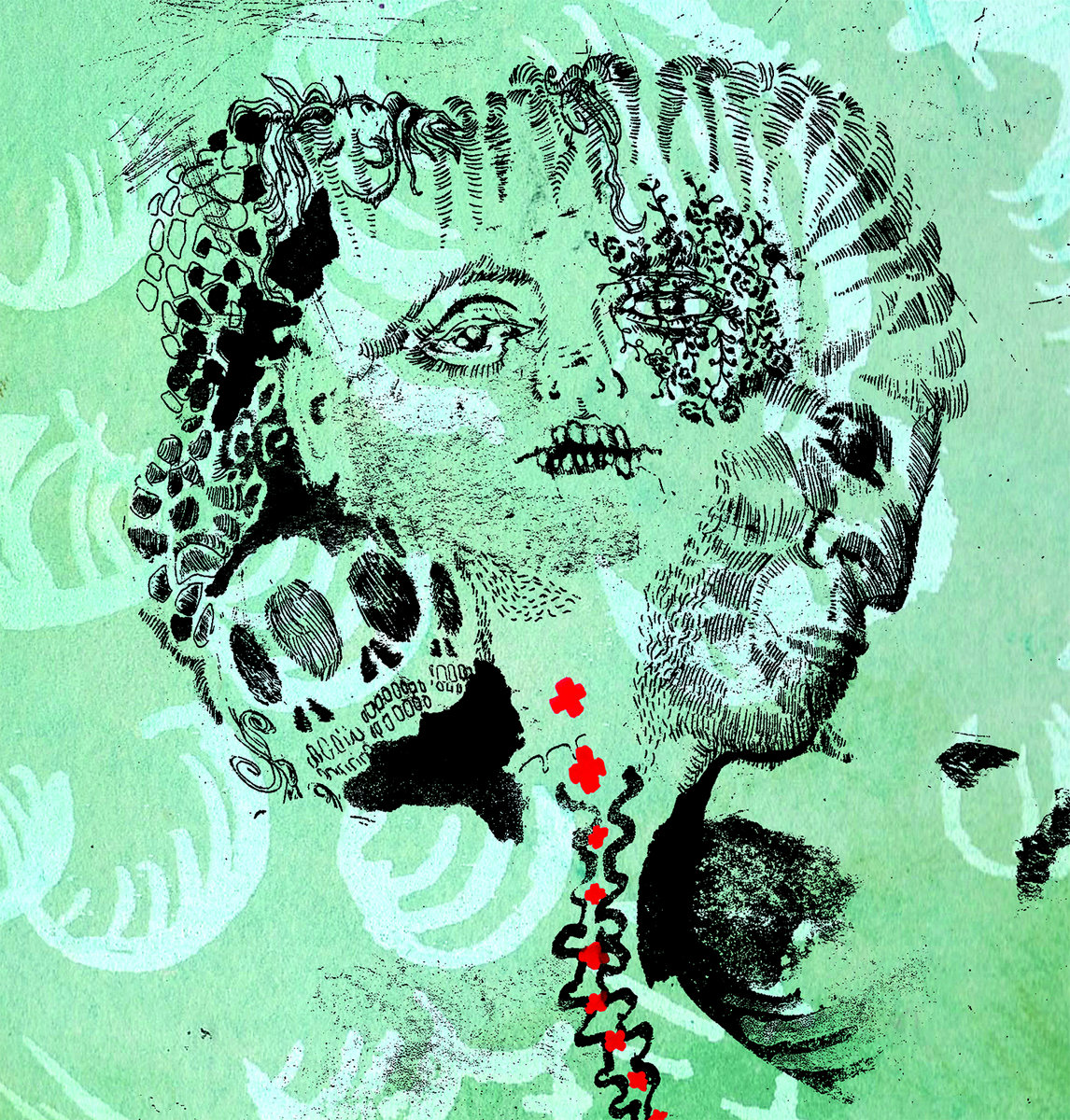 This latest LP from Big Blood is their first for Ba Da Bing and a spiritual successor of sorts to Do You Want to Have a Skeleton Dream?, as the band are back in "full family trio retro-pop extravaganza" mode. For the most part, Quinnissa (who was apparently only 13 when this album was recorded) handles the lead vocals for a series of hooky, bass-driven garage rock nuggets, though there are also a couple of headier Colleen-sung gems for fans of the band's darker, more psychedelic side. Notably, Caleb's frayed yelp is entirely absent from the proceedings, but it probably would have felt out of place among the unabashed throwback pop fare. Moreover, First Aid Kit feels like a full-on Quinnissa showcase, which makes for a rather unique entry in the Big Blood canon, as she is one hell of a belter and also spontaneously improvised all her lyrics during recordings. As Caleb notes in the album description, being in a band with your teenage daughter is admittedly something of a messy and volatile situation ("lots of practices end with her being tossed from the band"), but I can see why they are sticking with this format, as Quinnissa increasingly feels like a pop supernova in its formative stages.
This latest LP from Big Blood is their first for Ba Da Bing and a spiritual successor of sorts to Do You Want to Have a Skeleton Dream?, as the band are back in "full family trio retro-pop extravaganza" mode. For the most part, Quinnissa (who was apparently only 13 when this album was recorded) handles the lead vocals for a series of hooky, bass-driven garage rock nuggets, though there are also a couple of headier Colleen-sung gems for fans of the band's darker, more psychedelic side. Notably, Caleb's frayed yelp is entirely absent from the proceedings, but it probably would have felt out of place among the unabashed throwback pop fare. Moreover, First Aid Kit feels like a full-on Quinnissa showcase, which makes for a rather unique entry in the Big Blood canon, as she is one hell of a belter and also spontaneously improvised all her lyrics during recordings. As Caleb notes in the album description, being in a band with your teenage daughter is admittedly something of a messy and volatile situation ("lots of practices end with her being tossed from the band"), but I can see why they are sticking with this format, as Quinnissa increasingly feels like a pop supernova in its formative stages.
Ba Da Bing/Feeding Tube
This album's overall feel is something akin to a raucous wedding reception in which members of The Cramps and B-52's join forces for a spirited and spontaneous set of half-remembered '60s bubblegum pop covers. The opening "In My Head" represents that vein in its purest form, as it is built from little more than a meaty bass line, a simple thumping beat, and a subtly surf-damaged guitar tone. The most perfect iteration of that aesthetic comes much later on the album, as "1000 Times" feels like a raw and raucous cover of an imagined classic by someone like The Ronettes. Elsewhere, the dark paranoia of "Never Ending Nightmare" is yet another notable Quinnissa showcase, though its unsettling subject matter is nicely invigorated by a bouncy bassline, quirky percussion, and a killer chorus hook. Quinnissa also handles lead vocals on "Infinite Space," but that piece feels like a comparative anomaly more akin to Big Blood's non-Quinnissa fare. It still feels a bit unusually anthemic and driving for a Big Blood song, but reaching infinitely to space is a more traditional lyrical theme for the band and there are some very cool howling psych touches in the periphery. Admittedly, a lot of Quinnissa's lyrics sound like they were composed by a 13-year-old, but as the album's description insightfully observes, "teenage impulses fit right in with the band's intent, which is making music that's honest, inclusive and flawed." To their everlasting credit, Big Blood seem to be endlessly resourceful in their balancing of flawed spontaneity and thoughtful art, as Mulkerin harvests "the ghostly presence of past takes" as a subtly trippy background layer throughout the album.
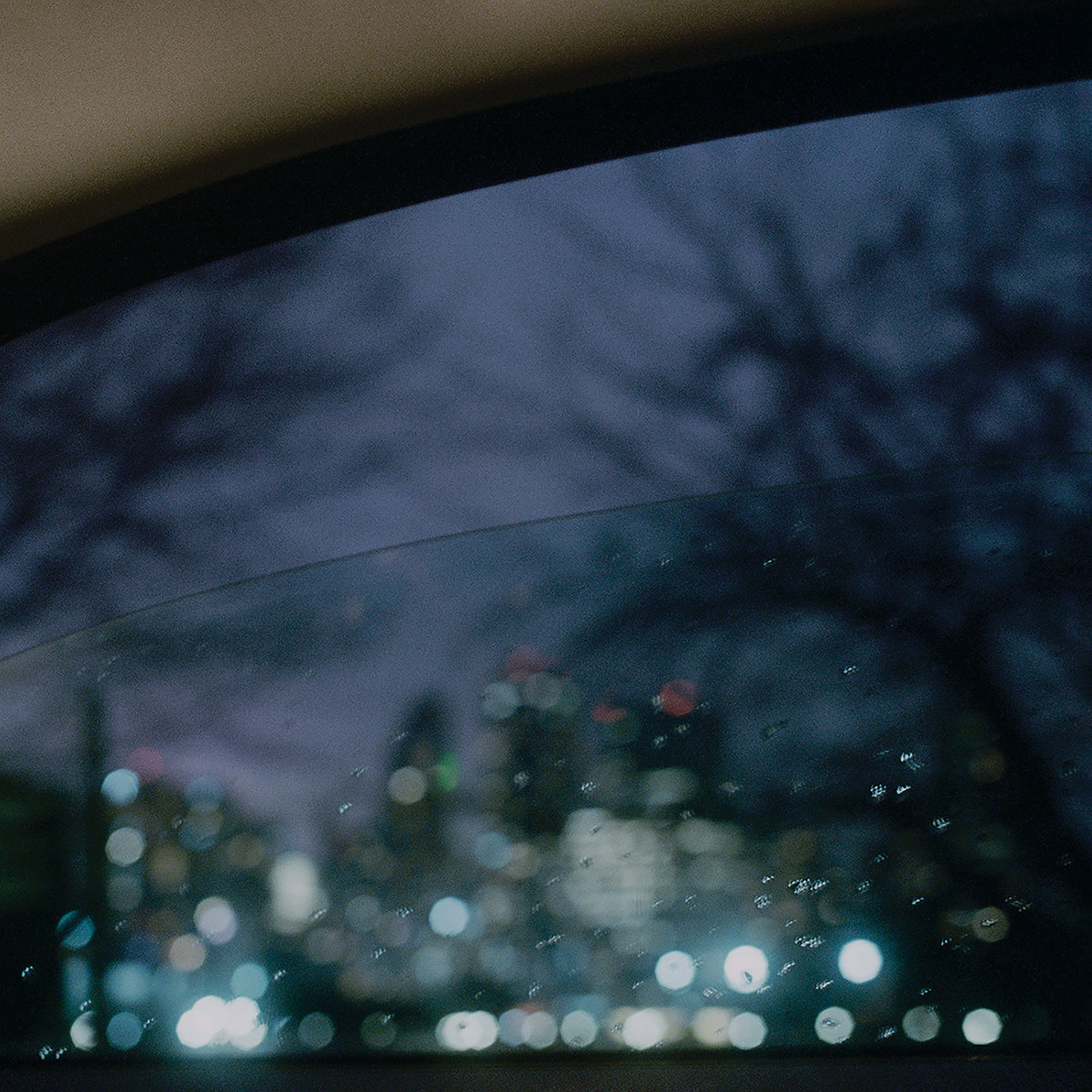 While I am a fan of both DJ Python (Brian Piñeyro) and Ana Roxanne, a collaboration between the two is not something that I would have ever foreseen happening due to the substantial gulf between their styles. Unusual circumstances can lead to unexpected places, however, and the two mutual admirers found themselves both adrift and living in NYC in 2020 ("well-loved albums aside, no one was playing shows, and a general listlessness and disconnection prevailed"). As a result, the two finally met in person and soon began working on new music together ("studio experimentation was the instinctive extension of a friendship finding its feet"). Before they could finish an album, however, circumstances changed again and Piñeyro returned to the European club scene, while Roxanne toured the world and moved back to California.
While I am a fan of both DJ Python (Brian Piñeyro) and Ana Roxanne, a collaboration between the two is not something that I would have ever foreseen happening due to the substantial gulf between their styles. Unusual circumstances can lead to unexpected places, however, and the two mutual admirers found themselves both adrift and living in NYC in 2020 ("well-loved albums aside, no one was playing shows, and a general listlessness and disconnection prevailed"). As a result, the two finally met in person and soon began working on new music together ("studio experimentation was the instinctive extension of a friendship finding its feet"). Before they could finish an album, however, circumstances changed again and Piñeyro returned to the European club scene, while Roxanne toured the world and moved back to California.

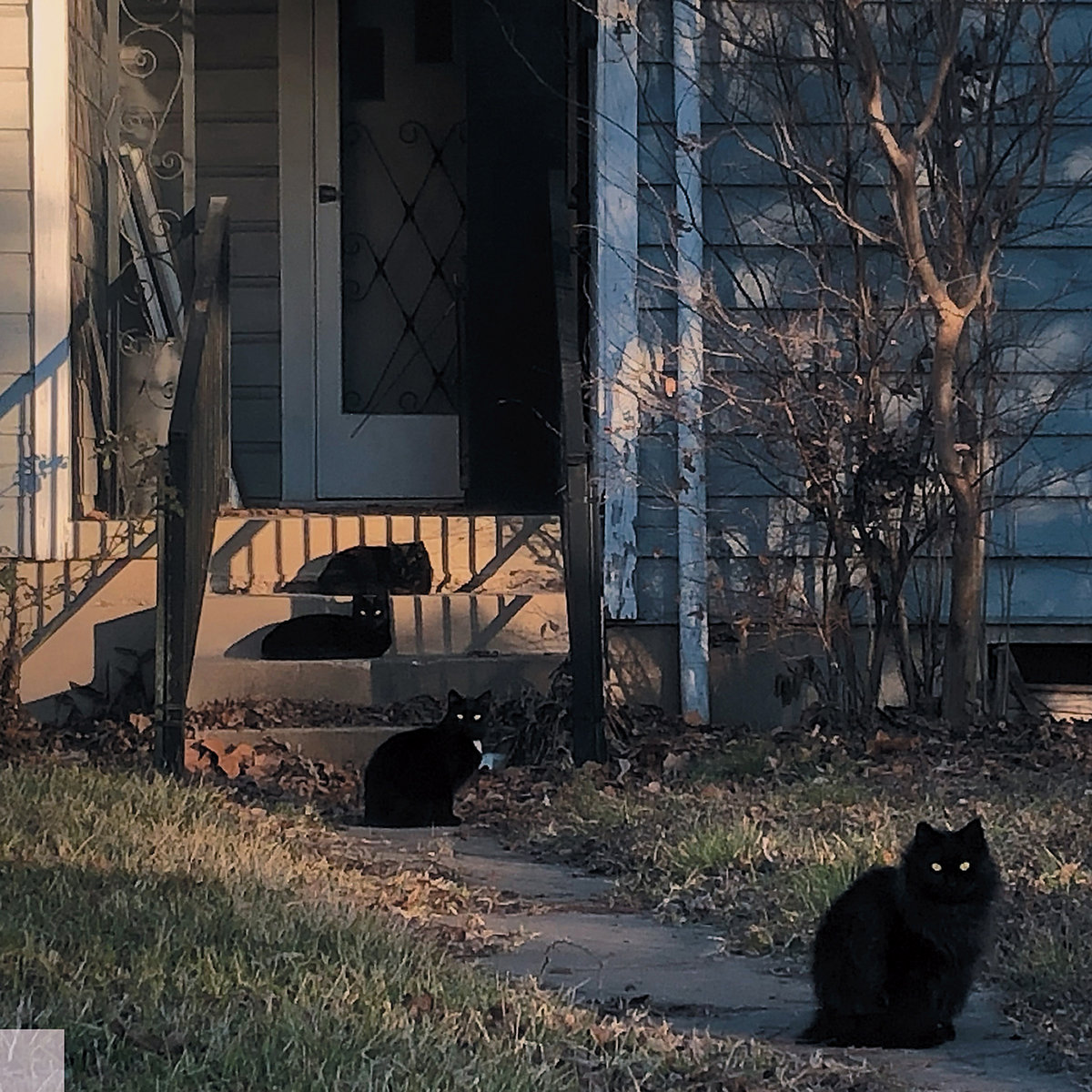 One of the reasons I had to investigate this latest album from the always prolific Masami Akita is that I was surprised it took him this long to make a cat themed album. A staunch animal rights activists and composer of many animal themed albums (Chickens! Bears! Dolphins! A whole bunch of other birds!), it took well over 40 years into his career to produce something in respect of the venerable house feline. How much this applies beyond the title and beautiful photography used as packaging is of course questionable, but musically it is Akita at his most diverse.
One of the reasons I had to investigate this latest album from the always prolific Masami Akita is that I was surprised it took him this long to make a cat themed album. A staunch animal rights activists and composer of many animal themed albums (Chickens! Bears! Dolphins! A whole bunch of other birds!), it took well over 40 years into his career to produce something in respect of the venerable house feline. How much this applies beyond the title and beautiful photography used as packaging is of course questionable, but musically it is Akita at his most diverse. This latest collection from Folklore Tapes borrows its title from a Japanese proverb about knowing one's limitations ("the frog in the well knows nothing of the sea"), which was itself borrowed from a Chinese fable. In the context of an album devoted to UFO lore, of course, humans are the frogs, the infinite universe is the ocean, and the usual eclectic Folklore Tapes cast of characters gleefully devote themselves to celebrating the colorful hoaxes and stories of their countrymen who claim to have experienced a visit from extraterrestrial life. While alien visitations are admittedly a bit outside the usual realm of Folklore Tapes' research, I would be hard pressed to think of a roster of artists better suited to tackle the topic, as just about everyone involved brings a freewheeling playfulness to the theme and surprises abound. This is yet another characteristically brilliant and inspired compilation from the inimitable Folklore Tapes. Hell, it might even be their best yet.
This latest collection from Folklore Tapes borrows its title from a Japanese proverb about knowing one's limitations ("the frog in the well knows nothing of the sea"), which was itself borrowed from a Chinese fable. In the context of an album devoted to UFO lore, of course, humans are the frogs, the infinite universe is the ocean, and the usual eclectic Folklore Tapes cast of characters gleefully devote themselves to celebrating the colorful hoaxes and stories of their countrymen who claim to have experienced a visit from extraterrestrial life. While alien visitations are admittedly a bit outside the usual realm of Folklore Tapes' research, I would be hard pressed to think of a roster of artists better suited to tackle the topic, as just about everyone involved brings a freewheeling playfulness to the theme and surprises abound. This is yet another characteristically brilliant and inspired compilation from the inimitable Folklore Tapes. Hell, it might even be their best yet. Like 2021's Four Lies in the Eavesdrop Business, composer/multi-instrumentalist Matt Weston's latest work is a lengthy double record. However, this time he specifically utilizes the format to create four side-long and expansive pieces that constantly develop, bringing in a multitude of different sounds and elements. The result is a series of intense, dense compositions that can be hard to keep up with at first, but eventually reveal a deep sense of complexity in their structures.
Like 2021's Four Lies in the Eavesdrop Business, composer/multi-instrumentalist Matt Weston's latest work is a lengthy double record. However, this time he specifically utilizes the format to create four side-long and expansive pieces that constantly develop, bringing in a multitude of different sounds and elements. The result is a series of intense, dense compositions that can be hard to keep up with at first, but eventually reveal a deep sense of complexity in their structures. As Alter's album description insightfully observes, a collaboration between these two Editions Mego alumnae "somehow seemed inevitable," yet I was still pleasantly surprised at how seamlessly Lewis and Void were able to combine their visions into something that feels both new and wonderful. On one level, the success of this union makes perfect sense, as both artists tend to turn out some of their strongest work in collaborative situations (Carter Tutti Void and Lewis's KLMNOPQ EP with Peder Mannerfelt being prime examples of that phenomenon). However, both artists excel in extremely specific realms that have some limitations: Lewis is exceptionally good at collaging non-musical sounds, while Void seems particularly adept at crafting eccentric noise-damaged techno.
As Alter's album description insightfully observes, a collaboration between these two Editions Mego alumnae "somehow seemed inevitable," yet I was still pleasantly surprised at how seamlessly Lewis and Void were able to combine their visions into something that feels both new and wonderful. On one level, the success of this union makes perfect sense, as both artists tend to turn out some of their strongest work in collaborative situations (Carter Tutti Void and Lewis's KLMNOPQ EP with Peder Mannerfelt being prime examples of that phenomenon). However, both artists excel in extremely specific realms that have some limitations: Lewis is exceptionally good at collaging non-musical sounds, while Void seems particularly adept at crafting eccentric noise-damaged techno.  This latest album from Barbieri is intended as a sister album to 2019's landmark Ecstatic Computation and has been released to correspond with the imminent reissue of the latter. The central difference between the two albums is that Myuthafoo gradually and organically took shape during Barbieri's extensive touring, as the "nomadic, interactive energy" of those many live dates inspired her to play with experimental variations in her process each night. More specifically, she would program patterns into her sequencer, then feed them into her "arsenal of noise generators" to explore different combinations and the most compelling results were set aside for future expansion and/or eventual release.
This latest album from Barbieri is intended as a sister album to 2019's landmark Ecstatic Computation and has been released to correspond with the imminent reissue of the latter. The central difference between the two albums is that Myuthafoo gradually and organically took shape during Barbieri's extensive touring, as the "nomadic, interactive energy" of those many live dates inspired her to play with experimental variations in her process each night. More specifically, she would program patterns into her sequencer, then feed them into her "arsenal of noise generators" to explore different combinations and the most compelling results were set aside for future expansion and/or eventual release.  Matthew Cooper's newest Eluvium album is apparently inspired by two works of poetic literature by T.S.Eliot and Richard Brautigan. That's easier said than done, of course, and equally unclear is how Cooper has changed his compositional methodology because of a debilitating medical problem with his left shoulder and arm. It is hard to decipher exactly what is meant by, to paraphrase, blending electronic automations with traditional songwriting and using algorithms to extract from several years of notebook scribble. Perhaps this means he has worked in cyborgian harmony with machines, which would fit with the Brautigan reference point of All Watched Over By Machines Of Loving Grace.
Matthew Cooper's newest Eluvium album is apparently inspired by two works of poetic literature by T.S.Eliot and Richard Brautigan. That's easier said than done, of course, and equally unclear is how Cooper has changed his compositional methodology because of a debilitating medical problem with his left shoulder and arm. It is hard to decipher exactly what is meant by, to paraphrase, blending electronic automations with traditional songwriting and using algorithms to extract from several years of notebook scribble. Perhaps this means he has worked in cyborgian harmony with machines, which would fit with the Brautigan reference point of All Watched Over By Machines Of Loving Grace. Emahoy Tsege Mariam Gebru passed on early this year, but not before this album was released to celebrate her 99th birthday. It collects pieces originally issued in 1972 as Song of Jerusalem, including the stunning title track and "Quand La Mer Furieuse" in which Gebru sings; a moment which probably should not draw parallels with "Garbo Talks!" (when the speaking voice of that star of silent films first shocked audiences to sleep) but is as startlingly beautiful as you might expect if you have heard her play her compositions for piano at all. These she does in a manner impossible to hear without feeling as if the sun has come out from behind a cloud and is gently warming the side of your face. Reach for adjectives and terms such as liturgical, classical, homemade, and heavenly, but the key word is definitely "transcendent."
Emahoy Tsege Mariam Gebru passed on early this year, but not before this album was released to celebrate her 99th birthday. It collects pieces originally issued in 1972 as Song of Jerusalem, including the stunning title track and "Quand La Mer Furieuse" in which Gebru sings; a moment which probably should not draw parallels with "Garbo Talks!" (when the speaking voice of that star of silent films first shocked audiences to sleep) but is as startlingly beautiful as you might expect if you have heard her play her compositions for piano at all. These she does in a manner impossible to hear without feeling as if the sun has come out from behind a cloud and is gently warming the side of your face. Reach for adjectives and terms such as liturgical, classical, homemade, and heavenly, but the key word is definitely "transcendent." This latest LP from Big Blood is their first for Ba Da Bing and a spiritual successor of sorts to Do You Want to Have a Skeleton Dream?, as the band are back in "full family trio retro-pop extravaganza" mode. For the most part, Quinnissa (who was apparently only 13 when this album was recorded) handles the lead vocals for a series of hooky, bass-driven garage rock nuggets, though there are also a couple of headier Colleen-sung gems for fans of the band's darker, more psychedelic side. Notably, Caleb's frayed yelp is entirely absent from the proceedings, but it probably would have felt out of place among the unabashed throwback pop fare. Moreover, First Aid Kit feels like a full-on Quinnissa showcase, which makes for a rather unique entry in the Big Blood canon, as she is one hell of a belter and also spontaneously improvised all her lyrics during recordings. As Caleb notes in the album description, being in a band with your teenage daughter is admittedly something of a messy and volatile situation ("lots of practices end with her being tossed from the band"), but I can see why they are sticking with this format, as Quinnissa increasingly feels like a pop supernova in its formative stages.
This latest LP from Big Blood is their first for Ba Da Bing and a spiritual successor of sorts to Do You Want to Have a Skeleton Dream?, as the band are back in "full family trio retro-pop extravaganza" mode. For the most part, Quinnissa (who was apparently only 13 when this album was recorded) handles the lead vocals for a series of hooky, bass-driven garage rock nuggets, though there are also a couple of headier Colleen-sung gems for fans of the band's darker, more psychedelic side. Notably, Caleb's frayed yelp is entirely absent from the proceedings, but it probably would have felt out of place among the unabashed throwback pop fare. Moreover, First Aid Kit feels like a full-on Quinnissa showcase, which makes for a rather unique entry in the Big Blood canon, as she is one hell of a belter and also spontaneously improvised all her lyrics during recordings. As Caleb notes in the album description, being in a band with your teenage daughter is admittedly something of a messy and volatile situation ("lots of practices end with her being tossed from the band"), but I can see why they are sticking with this format, as Quinnissa increasingly feels like a pop supernova in its formative stages. This latest LP from Wolf Eyes is something of a major release for the duo, as they are currently celebrating their 25th year with "their first widely-distributed non-compilation album in six years." Fittingly, Dreams In Splattered Lines is one of the project's most compelling and sophisticated albums to date, which is likely the result of some recent developments that would have seemed absolutely unimaginable when the project first began (collaborating with a Pulitzer Prize winner, a viral video for a fashion company, sharing stages with jazz titans, a residency at The New York Public Library, etc.). The library residency in particular played an especially large role in shaping this album, as the duo built a number of new instruments while they were there and also spent a lot of time absorbing the Surrealism Beyond Borders exhibit at the Metropolitan Museum of Art. Of course, the truly interesting bit is how inventively Nate Young and John Olson assimilated all their new ideas, as well as the fact that their more high art/avant-garde influences amusingly collide with a newfound fascination with how "hit songs" work. While Wolf Eyes have sporadically dazzled me over the years as a cool noise band, Dreams In Splattered Lines feels like the album where they have arguably become the spiritual heirs to Throbbing Gristle in channeling the best ideas of the 20th century avant-garde into a zeitgeist-capturing mirror of the times (a post-hope world of crumbling institutions and widespread alienation).
This latest LP from Wolf Eyes is something of a major release for the duo, as they are currently celebrating their 25th year with "their first widely-distributed non-compilation album in six years." Fittingly, Dreams In Splattered Lines is one of the project's most compelling and sophisticated albums to date, which is likely the result of some recent developments that would have seemed absolutely unimaginable when the project first began (collaborating with a Pulitzer Prize winner, a viral video for a fashion company, sharing stages with jazz titans, a residency at The New York Public Library, etc.). The library residency in particular played an especially large role in shaping this album, as the duo built a number of new instruments while they were there and also spent a lot of time absorbing the Surrealism Beyond Borders exhibit at the Metropolitan Museum of Art. Of course, the truly interesting bit is how inventively Nate Young and John Olson assimilated all their new ideas, as well as the fact that their more high art/avant-garde influences amusingly collide with a newfound fascination with how "hit songs" work. While Wolf Eyes have sporadically dazzled me over the years as a cool noise band, Dreams In Splattered Lines feels like the album where they have arguably become the spiritual heirs to Throbbing Gristle in channeling the best ideas of the 20th century avant-garde into a zeitgeist-capturing mirror of the times (a post-hope world of crumbling institutions and widespread alienation).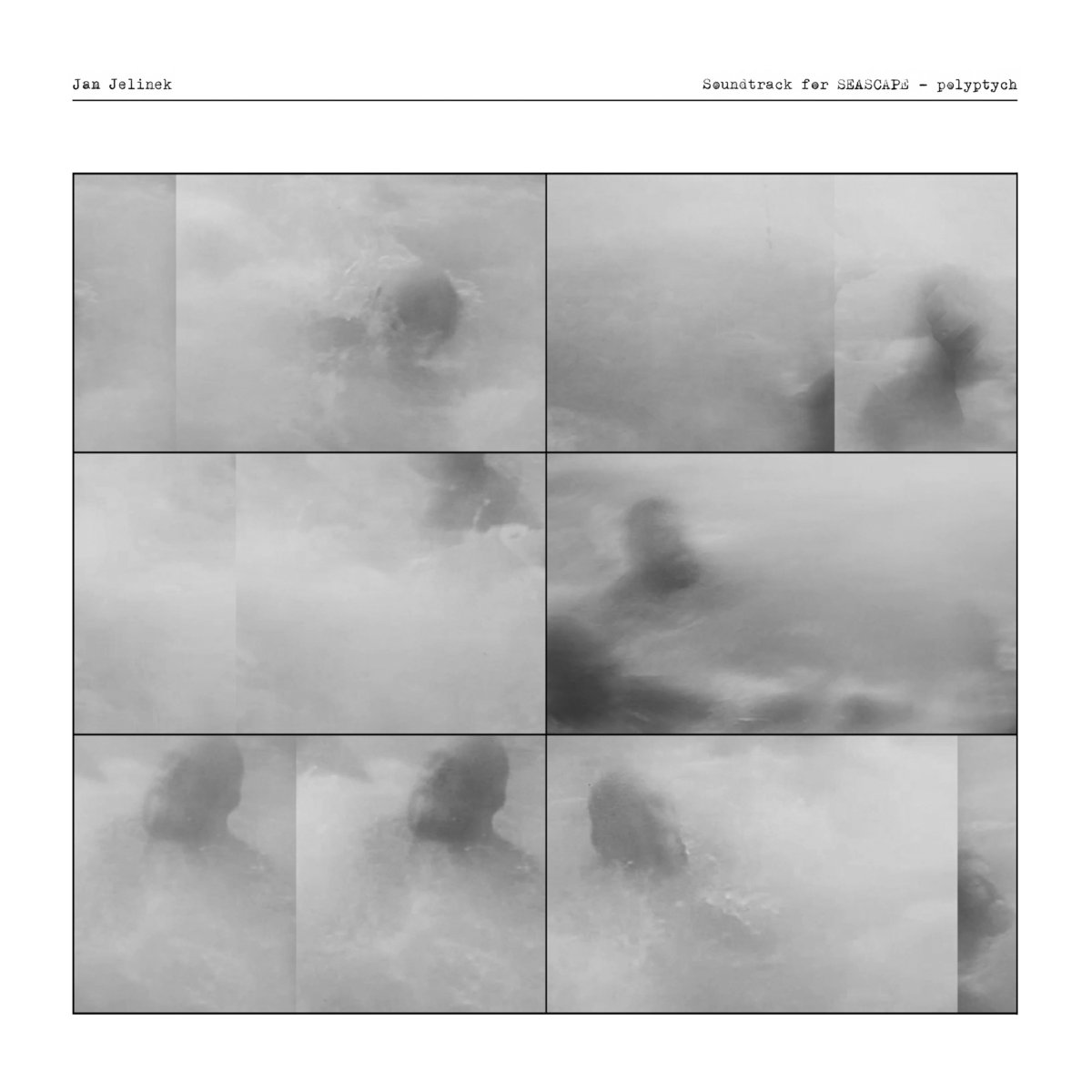 Back in 2017 Jan Jelinek created a 43 minute radio play called Zwischen featuring Alice Schwarzer, John Cage, Hubert Fichte, Marshall McLuhan, Susan Sontag, Rainer Werner Fassbinder, Joseph Beuys, Friedericke Mayröcker, Joschka Fischer, Jonathan Meese, Jean Baudrillard, Lady Gaga, Slavoj Zizek, Richard Buckminster Fuller, Marcel Duchamp, Karlheinz Stockhausen, Miranda July, Yoko Ono, Ernst Jandl, Arno Schmidt, Herbert Wehner and Max Ernst.
Back in 2017 Jan Jelinek created a 43 minute radio play called Zwischen featuring Alice Schwarzer, John Cage, Hubert Fichte, Marshall McLuhan, Susan Sontag, Rainer Werner Fassbinder, Joseph Beuys, Friedericke Mayröcker, Joschka Fischer, Jonathan Meese, Jean Baudrillard, Lady Gaga, Slavoj Zizek, Richard Buckminster Fuller, Marcel Duchamp, Karlheinz Stockhausen, Miranda July, Yoko Ono, Ernst Jandl, Arno Schmidt, Herbert Wehner and Max Ernst. Dorothy Moskovitz was the singer in The United States of America, a short-lived group which made one legendary self-titled album. That was in December 1967 and she later became a member of Country Joe McDonald's band, sang live jazz, composed for children, commercials, theater, and became an elementary school music teacher. Her return on Under an Endless Sky, recorded with Italian electronic composer Francesco Paolo Paladino and writer Luca Ferrari is astonishing, and never more so at the moment around two and a half minutes into the opening title track when we hear Dorothy Moskovitz sing for the first time in a very long time*. If her voice once sounded cooler and more urbane than Catherine Ribeiro's, more innocent and intelligent than Grace Slick's, in 2023 it has a crumbling beauty and defiant timbre usually associated with Robert Wyatt or Nico (who apparently once tried to join TUSoA). Comparisons are entertaining but also odious; Moskovitz is a strange, distinctive treasure, perhaps unique.
Dorothy Moskovitz was the singer in The United States of America, a short-lived group which made one legendary self-titled album. That was in December 1967 and she later became a member of Country Joe McDonald's band, sang live jazz, composed for children, commercials, theater, and became an elementary school music teacher. Her return on Under an Endless Sky, recorded with Italian electronic composer Francesco Paolo Paladino and writer Luca Ferrari is astonishing, and never more so at the moment around two and a half minutes into the opening title track when we hear Dorothy Moskovitz sing for the first time in a very long time*. If her voice once sounded cooler and more urbane than Catherine Ribeiro's, more innocent and intelligent than Grace Slick's, in 2023 it has a crumbling beauty and defiant timbre usually associated with Robert Wyatt or Nico (who apparently once tried to join TUSoA). Comparisons are entertaining but also odious; Moskovitz is a strange, distinctive treasure, perhaps unique. Releasing two full length albums mere months from each other, Colin Andrew Sheffield has been especially active in 2023. Considering his previous Repair Me Now dates back to 2018, it is a veritable flurry of activity. However, this is not a case where Don't Ever Let Me Know and Images seem like a double album split into two separate works, but both are thematically and structurally different from one another, even if both clearly showcase his approach of mangling samples and recordings into entirely different creations.
Releasing two full length albums mere months from each other, Colin Andrew Sheffield has been especially active in 2023. Considering his previous Repair Me Now dates back to 2018, it is a veritable flurry of activity. However, this is not a case where Don't Ever Let Me Know and Images seem like a double album split into two separate works, but both are thematically and structurally different from one another, even if both clearly showcase his approach of mangling samples and recordings into entirely different creations.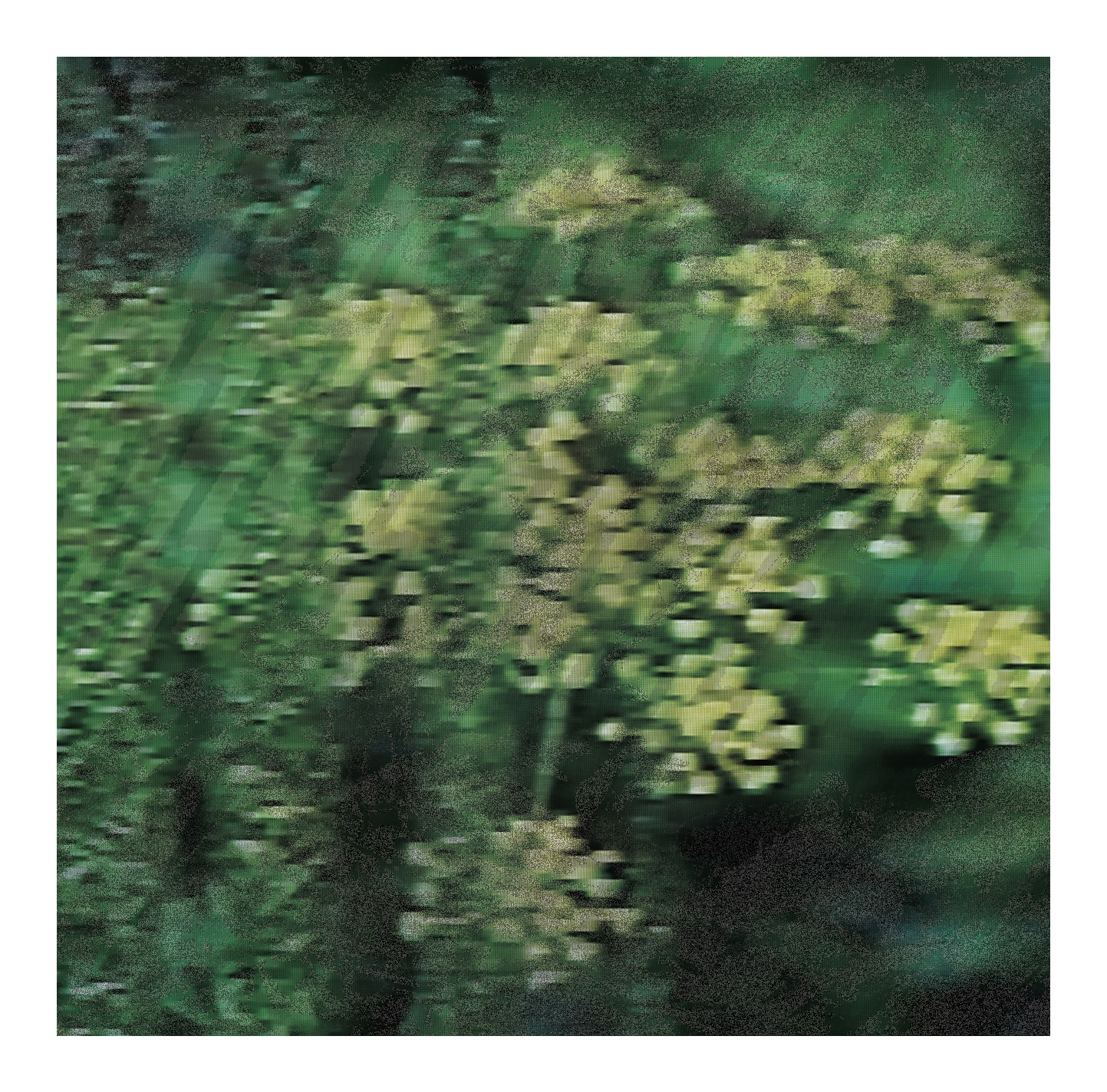 The latest cassette from the enigmatic duo Zizia (astrologer Amber Wolfe and natural scientist Jarrod Fowler) is intentionally ambiguous just from its presentation. No information presented within the tape itself, its neon green case covers a blurry photo of the Zizia flower and an intricately printed abstract image on the cassette shell, without a single bit of text included on either. A quick search online finds a website that offers details, listings of insects, plants, and artists that serve only to confound more than clarify. The self-identified concept of anti-musicology is apparent, however, and results in a complex and diverse suite of two lengthy noise works.
The latest cassette from the enigmatic duo Zizia (astrologer Amber Wolfe and natural scientist Jarrod Fowler) is intentionally ambiguous just from its presentation. No information presented within the tape itself, its neon green case covers a blurry photo of the Zizia flower and an intricately printed abstract image on the cassette shell, without a single bit of text included on either. A quick search online finds a website that offers details, listings of insects, plants, and artists that serve only to confound more than clarify. The self-identified concept of anti-musicology is apparent, however, and results in a complex and diverse suite of two lengthy noise works. These two albums from Seah, also known as multimedia artist and philosopher Chelsea Heikes, seemingly draw from different elemental categories, which ends up setting the foundation for the sounds contained within. The first, Conduits of the Hydrosphere, clearly draws from water while Clouds and Spectres is appropriately expansive, vapor-like, and ghostly at times. Released separately, they feel like complementary works that act as variations on sonic exploration.
These two albums from Seah, also known as multimedia artist and philosopher Chelsea Heikes, seemingly draw from different elemental categories, which ends up setting the foundation for the sounds contained within. The first, Conduits of the Hydrosphere, clearly draws from water while Clouds and Spectres is appropriately expansive, vapor-like, and ghostly at times. Released separately, they feel like complementary works that act as variations on sonic exploration.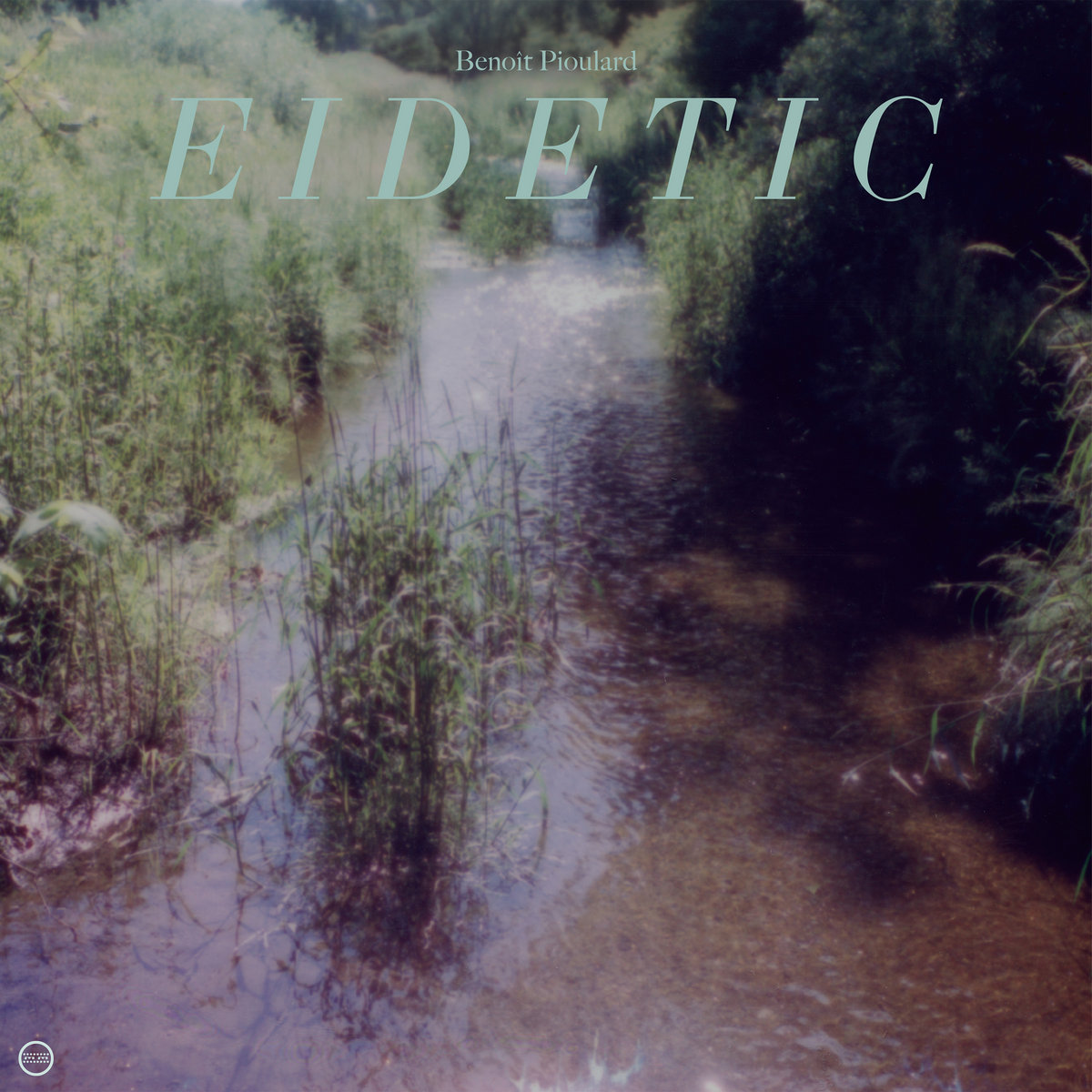 Back in 2019 Benoit Pioulard (Thomas Meluch) issued Sylva—an album full of abstract hyper-saturated lo-fi drone-pop sonic textures, which came with an 84 page collection of nature photographs in a linen book. Two pieces with vocals stood out: the brilliantly Bibioesque "Keep" and the less jangly but equally catchy "Meristem." These songs could not have been more appealing to me if Meluch had somehow used a machine to extract my personal dream essence as I slept. Naturally, I promptly forgot to write anything about Sylva, but Eidetic is a leap forward, with more vocals, so I'm glad I kept my powder dry.
Back in 2019 Benoit Pioulard (Thomas Meluch) issued Sylva—an album full of abstract hyper-saturated lo-fi drone-pop sonic textures, which came with an 84 page collection of nature photographs in a linen book. Two pieces with vocals stood out: the brilliantly Bibioesque "Keep" and the less jangly but equally catchy "Meristem." These songs could not have been more appealing to me if Meluch had somehow used a machine to extract my personal dream essence as I slept. Naturally, I promptly forgot to write anything about Sylva, but Eidetic is a leap forward, with more vocals, so I'm glad I kept my powder dry. Every so often a beautifully flawed pseudo-concept album gets released which it is almost a sin to try to describe. So it is with this absolutely mesmerizing record, a taste-smashing, fabulously old-fashioned, wobbly blitzkrieg of slippery, retro-futuristic, prog rock precision. As a rule I try to avoid describing music by talking about other music the reader may or may not have heard, but the gloves are coming off for this one. Imagine if modern psych groups weren't so one-paced, if Barclay James Harvest had a wah wah pedal and enjoyed fiddling with tape speeds, if Yes were fronted by Serge Gainsbourg or had a sense of humor, if The Opium Warlords and Bo Hansen joined The Mike Sammes Singers; and it all sounded perfectly natural. Juxtaposition and incongruity are at the heart of The Valley of The Dandies: a wonderfully unpredictable recording which manages to sound deliberately dated, and also touches on mythical themes ("explored" would be an exaggeration) but not in a po-faced or over-referential manner. The music is sometimes grandiose but CV Vision does not portray by resorting to a dull slow burn plodding pace. These tunes are amusing, bright, clever, and dynamic, the lyrics intriguingly clumsy but yet light and unobtrusive. There is an unknowable quality to this album, though; and a certain confidence in its completeness. It can not be reduced to a few neat genres, has a rich complexity but never sounds cluttered or gets bogged down. This is a real gem: clean, clear and valuable. It may become a cult classic or merely prove to be a refreshing oddity. Either way I played this thing through five times without a break!
Every so often a beautifully flawed pseudo-concept album gets released which it is almost a sin to try to describe. So it is with this absolutely mesmerizing record, a taste-smashing, fabulously old-fashioned, wobbly blitzkrieg of slippery, retro-futuristic, prog rock precision. As a rule I try to avoid describing music by talking about other music the reader may or may not have heard, but the gloves are coming off for this one. Imagine if modern psych groups weren't so one-paced, if Barclay James Harvest had a wah wah pedal and enjoyed fiddling with tape speeds, if Yes were fronted by Serge Gainsbourg or had a sense of humor, if The Opium Warlords and Bo Hansen joined The Mike Sammes Singers; and it all sounded perfectly natural. Juxtaposition and incongruity are at the heart of The Valley of The Dandies: a wonderfully unpredictable recording which manages to sound deliberately dated, and also touches on mythical themes ("explored" would be an exaggeration) but not in a po-faced or over-referential manner. The music is sometimes grandiose but CV Vision does not portray by resorting to a dull slow burn plodding pace. These tunes are amusing, bright, clever, and dynamic, the lyrics intriguingly clumsy but yet light and unobtrusive. There is an unknowable quality to this album, though; and a certain confidence in its completeness. It can not be reduced to a few neat genres, has a rich complexity but never sounds cluttered or gets bogged down. This is a real gem: clean, clear and valuable. It may become a cult classic or merely prove to be a refreshing oddity. Either way I played this thing through five times without a break! The latest ambitious durational epic from the Opalio brothers is thankfully not nearly as daunting as its 15-disc physical form suggests, as RINASCIMENTO ("Renaissance") is composed of 15 movements of varying lengths ranging from 5 to 40 minutes. The reasoning behind the unusual format is arguably twofold, as the Opalios' belief that "each sound claims its own space" is extended to dedicate a full disc to each movement and listeners are invited to "subvert the order" to make use of "random/chance operation à la Cage." There is an additional piece to the puzzle as well, however, as the handcrafted box and CD-R format were deliberately chosen as a return to MCIAA's "radical DIY" origins and as a pointed commentary on underground music's current maddening dependence on vinyl pressing plants and predatory corporations. Unsurprisingly, the primary appeal of RINASCIMENTO is the same as that of every other multi-hour MCIAA tour de force: it is a sustained and mind-altering plunge into otherworldly psychedelia that abandons nearly all earthbound notions of harmony, melody, structure, and instrumentation (and that is not an exaggeration). While the brothers' sonic palette will be a familiar one for longtime MCIAA fans (being a two-person real-time "spontaneous composition" project has some limitations), RINASCIMENTO is nevertheless one hell of a statement, as it collects the duo's most revelatory flashes of inspiration from an entire year of recordings (several of which capture the duo in peak longform form).
The latest ambitious durational epic from the Opalio brothers is thankfully not nearly as daunting as its 15-disc physical form suggests, as RINASCIMENTO ("Renaissance") is composed of 15 movements of varying lengths ranging from 5 to 40 minutes. The reasoning behind the unusual format is arguably twofold, as the Opalios' belief that "each sound claims its own space" is extended to dedicate a full disc to each movement and listeners are invited to "subvert the order" to make use of "random/chance operation à la Cage." There is an additional piece to the puzzle as well, however, as the handcrafted box and CD-R format were deliberately chosen as a return to MCIAA's "radical DIY" origins and as a pointed commentary on underground music's current maddening dependence on vinyl pressing plants and predatory corporations. Unsurprisingly, the primary appeal of RINASCIMENTO is the same as that of every other multi-hour MCIAA tour de force: it is a sustained and mind-altering plunge into otherworldly psychedelia that abandons nearly all earthbound notions of harmony, melody, structure, and instrumentation (and that is not an exaggeration). While the brothers' sonic palette will be a familiar one for longtime MCIAA fans (being a two-person real-time "spontaneous composition" project has some limitations), RINASCIMENTO is nevertheless one hell of a statement, as it collects the duo's most revelatory flashes of inspiration from an entire year of recordings (several of which capture the duo in peak longform form). This is the second solo album from NYC-based violist/composer/musicologist Annie Garlid and it borrows its name from the Greek word for "place." Notably, Garlid moved back to the US in 2018 after spending a decade in Europe (playing viola in a German opera orchestra, among other things) and that return to her home country unsurprisingly stirred up some deep and unfamiliar thoughts and feelings. Those ruminations directly inspired Topos conceptually, as the album is a meditation on the "simultaneous familiarity and foreignness" of Garlid's surroundings and her entanglement "with a place that was both in her memory and in front of her eyes." Regardless of its inspirations, Topos is a very different (and stronger) album than its predecessor United, as Garlid's medieval and baroque influences are newly downplayed in favor of a more sensuous, hallucinatory, and vocal-centric vision. While that transformation makes a lot of sense given Garlid's work with artists like Caterina Barbieri, Holly Herndon, Emptyset, and ASMR artist Claire Tolan, her assimilation of those disparate influences is impressively seamless and inventive, as Topos feels like the blossoming of a compelling and distinctive new vision.
This is the second solo album from NYC-based violist/composer/musicologist Annie Garlid and it borrows its name from the Greek word for "place." Notably, Garlid moved back to the US in 2018 after spending a decade in Europe (playing viola in a German opera orchestra, among other things) and that return to her home country unsurprisingly stirred up some deep and unfamiliar thoughts and feelings. Those ruminations directly inspired Topos conceptually, as the album is a meditation on the "simultaneous familiarity and foreignness" of Garlid's surroundings and her entanglement "with a place that was both in her memory and in front of her eyes." Regardless of its inspirations, Topos is a very different (and stronger) album than its predecessor United, as Garlid's medieval and baroque influences are newly downplayed in favor of a more sensuous, hallucinatory, and vocal-centric vision. While that transformation makes a lot of sense given Garlid's work with artists like Caterina Barbieri, Holly Herndon, Emptyset, and ASMR artist Claire Tolan, her assimilation of those disparate influences is impressively seamless and inventive, as Topos feels like the blossoming of a compelling and distinctive new vision. Just about anything which bucks stereotypes, and the more effortlessly the better, is usually fine and dandy with me. The notion of a sustained outbreak of surrealism down in Alabama is therefore beyond delicious. I say this because there's a definite sense in which Turner Williams Jr. is following in the rambling loose limbed footsteps of such musicians as Ron Pate, Fred Lane, LaDonna Smith, and particularly Davey Williams, who studied with Johnny Shines and was part of the whole Raudelunas Pataphysical Revue scene - playing alto and guitar on such pieces as "The Lonely Astronaut" and "Concerto For Active Frogs''. Let me say here that the origin of pataphysics is perhaps best left to another time, since Alfred Jarry's absurdity and all that merde (absinthe-fueled and otherwise) simply cannot be skimmed over.
Just about anything which bucks stereotypes, and the more effortlessly the better, is usually fine and dandy with me. The notion of a sustained outbreak of surrealism down in Alabama is therefore beyond delicious. I say this because there's a definite sense in which Turner Williams Jr. is following in the rambling loose limbed footsteps of such musicians as Ron Pate, Fred Lane, LaDonna Smith, and particularly Davey Williams, who studied with Johnny Shines and was part of the whole Raudelunas Pataphysical Revue scene - playing alto and guitar on such pieces as "The Lonely Astronaut" and "Concerto For Active Frogs''. Let me say here that the origin of pataphysics is perhaps best left to another time, since Alfred Jarry's absurdity and all that merde (absinthe-fueled and otherwise) simply cannot be skimmed over.
